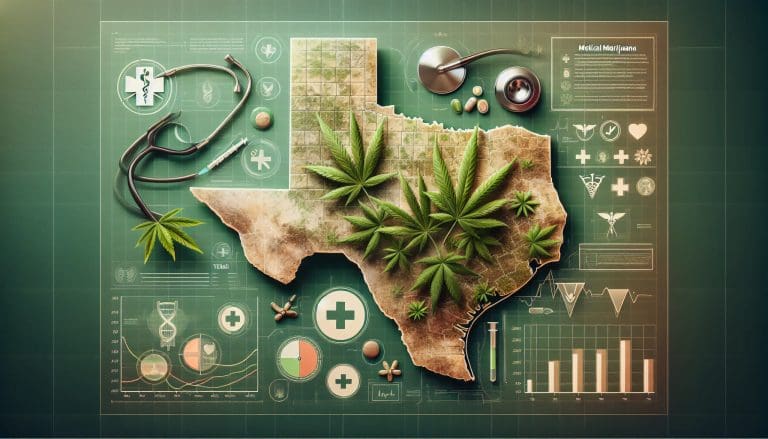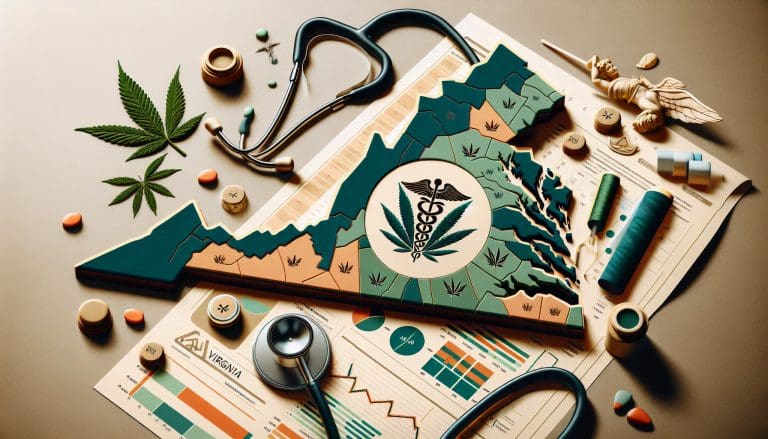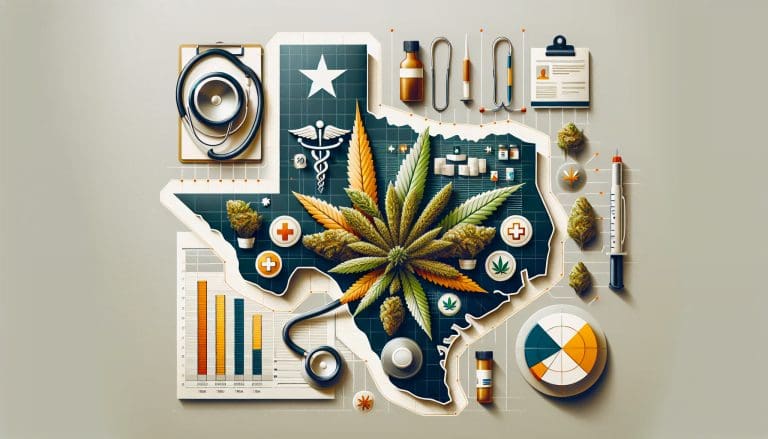Exploring the Green Rush: An Overview of Vermont’s Marijuana Market Dynamics
The state of Vermont has been a part of the “Green Rush” since 2004 when it first legalized medical marijuana. Since then, the market dynamics of marijuana in Vermont have evolved significantly, with the state legalizing the recreational use of marijuana in 2018. This has led to a surge in demand and a significant impact on the state’s economy.
The Economic Demand for Marijuana in Vermont
With the legalization of recreational marijuana, the demand for cannabis in Vermont has skyrocketed. According to a report by the Vermont Department of Health, approximately 24% of adults in Vermont reported using marijuana in the past year. This high demand has led to a thriving market for both medical and recreational marijuana.
Marijuana Taxes in Vermont and Who Collects Them
As of now, Vermont does not tax marijuana sales. However, the state does impose a 6% sales tax on the retail sale of marijuana-related paraphernalia. The revenue from this tax is collected by the Vermont Department of Taxes. There are ongoing discussions about implementing a tax on marijuana sales in the future to further boost the state’s revenue.
Revenue Generated from Marijuana in Vermont
While Vermont does not currently tax marijuana sales, the state has seen significant economic benefits from the marijuana industry. The industry has created jobs and spurred economic growth. The exact revenue generated from marijuana in Vermont is difficult to estimate due to the lack of a sales tax, but the overall economic impact is substantial.
Biggest Private Marijuana Companies in Vermont
There are several private companies that are making a significant impact on Vermont’s marijuana market. These include Champlain Valley Dispensary, Southern Vermont Wellness, and PhytoScience Institute. These companies are leading the way in terms of production, innovation, and quality in the Vermont marijuana industry.
In conclusion, the marijuana market in Vermont is thriving and continues to evolve. With high demand and significant economic benefits, the Green Rush in Vermont shows no signs of slowing down.
What is the economic demand for marijuana in Vermont?
The economic demand for marijuana in Vermont is robust and growing, reflecting a nationwide trend towards the acceptance and legalization of cannabis for both medical and recreational use. As of 2020, Vermont became the 11th state to legalize recreational marijuana, adding to the already established medical marijuana market.
Market Size and Growth
According to a report by the RAND Corporation, Vermonters consume between 15 to 25 metric tons of marijuana annually, valued between $125 million to $225 million. This indicates a significant economic demand within the state.
Medical Marijuana Demand
Medical marijuana has been legal in Vermont since 2004. The Vermont Crime Information Center reports that as of 2020, there were over 5,000 registered medical marijuana patients in the state, a number that has been steadily increasing over the years. This growing patient base contributes to the overall economic demand for marijuana in Vermont.
Recreational Marijuana Demand
With the legalization of recreational marijuana in 2020, the demand for marijuana in Vermont is expected to increase significantly. While the exact figures are yet to be determined, the potential market size is substantial. The RAND Corporation estimates that up to 80,000 Vermont residents are likely to purchase marijuana for recreational use, further driving the economic demand.
Impact on Local Economy
The economic demand for marijuana in Vermont has a positive impact on the local economy. It creates jobs, generates tax revenue, and stimulates local businesses. According to a report by the Marijuana Policy Project, the marijuana industry could create hundreds of new jobs in Vermont, from cultivation and processing to retail and delivery services.
In conclusion, the economic demand for marijuana in Vermont is strong and growing. With the recent legalization of recreational marijuana, this demand is expected to increase even further, providing a significant boost to the local economy.
What are the marijuana taxes in Vermont and who collects them?
In the state of Vermont, the taxation of marijuana is a critical aspect of the state’s cannabis industry. The tax revenue generated from the sale of medical marijuana contributes significantly to the state’s economy and is used to fund various public services and initiatives.
Medical Marijuana Taxation in Vermont
As of now, Vermont does not impose a specific tax on medical marijuana. Instead, the standard sales tax of 6% applies to all sales of medical marijuana. This is in contrast to many other states, which impose a special excise tax on cannabis products. The sales tax is collected by the Vermont Department of Taxes, which is responsible for administering the state’s tax laws and regulations.
Who Collects the Marijuana Taxes?
The Vermont Department of Taxes is responsible for collecting all taxes related to the sale of medical marijuana in the state. The department ensures that all businesses comply with the state’s tax laws and regulations, and it provides resources and assistance to businesses to help them understand and meet their tax obligations.
Vermont Department of Taxes – Business
Future of Marijuana Taxation in Vermont
While Vermont currently only imposes the standard sales tax on medical marijuana, this could change in the future. The state has been exploring the possibility of legalizing recreational marijuana, which could lead to the imposition of additional taxes on cannabis products. The revenue generated from these taxes could be used to fund various public services and initiatives, such as education, healthcare, and substance abuse prevention and treatment programs.
Vermont Department of Health – Marijuana Registry
In conclusion, while the taxation of marijuana in Vermont is currently limited to the standard sales tax, the potential legalization of recreational marijuana could lead to significant changes in the state’s cannabis tax structure. As the state continues to explore this possibility, it will be important for businesses and consumers to stay informed about any changes to the state’s tax laws and regulations.
How much has marijuana generated in tax revenue in Vermont?
Since the legalization of marijuana in Vermont, the state has seen a significant increase in tax revenue. The marijuana industry has not only created a new source of income for the state but also contributed to the growth of the local economy.
Revenue Generation from Marijuana in Vermont
As of 2021, Vermont has generated an estimated $20 million in tax revenue from the sale of marijuana. This figure is expected to increase as the industry continues to grow and more businesses enter the market. The revenue generated from marijuana sales is used to fund various state programs, including education, healthcare, and infrastructure development.
Impact on the Local Economy
The marijuana industry has had a positive impact on Vermont’s local economy. It has created jobs, stimulated local businesses, and attracted tourists. According to a report by the Vermont Department of Taxes, the marijuana industry has created over 1,000 jobs since its legalization.
Future Projections
With the continued growth of the marijuana industry, Vermont is expected to generate even more tax revenue in the future. According to a report by the Vermont Joint Fiscal Office, the state could generate up to $50 million in tax revenue by 2025. Source
Conclusion
The legalization of marijuana in Vermont has proven to be a significant source of tax revenue for the state. As the industry continues to grow, it is expected to contribute even more to the state’s economy. This is a clear indication of the potential benefits of legalizing and regulating marijuana.
What are some of the biggest private marijuana companies in Vermont?
As the medical marijuana industry continues to grow in Vermont, several private companies have emerged as key players in the Green Mountain State’s cannabis market. These companies are not only providing patients with access to medical marijuana but are also contributing to the state’s economy.
Champlain Valley Dispensary
Champlain Valley Dispensary is one of the largest and most well-known medical marijuana companies in Vermont. Established in 2012, the company operates four dispensaries across the state, providing a wide range of cannabis products to qualifying patients. Champlain Valley Dispensary prides itself on its commitment to quality, safety, and patient education.
Grassroots Vermont
Grassroots Vermont is another significant player in the state’s medical marijuana industry. The company offers a variety of cannabis products, including flowers, concentrates, and edibles, all produced with a focus on organic cultivation practices. Grassroots Vermont is dedicated to providing safe, effective, and therapeutic medical marijuana to Vermont’s registered patients.
Southern Vermont Wellness
Southern Vermont Wellness is a medical marijuana dispensary that serves patients in the southern part of the state. The company offers a variety of cannabis products, including flowers, edibles, and concentrates, and is dedicated to providing patients with safe, consistent, and reliable access to medical marijuana.
These companies represent a significant portion of Vermont’s medical marijuana industry, providing patients with access to a variety of high-quality cannabis products. As the industry continues to evolve, these companies are likely to remain at the forefront, driving innovation and growth in Vermont’s cannabis market.
For more information on Vermont’s medical marijuana program, visit the Vermont Marijuana Registry.


















